In Europe now, quite high utility rates, including electricity. That is why apartments have become increasingly interested in balcony photovoltaic, that is, solar panels installed on the balcony. Since there is no possibility to place solar modules on a roof or a land plot in apartment buildings, the owners of the apartments install them near window openings on the outside of the building or on the balcony. In this way, they manage to generate electricity to meet their own energy needs. This step allows you to save considerably on paying utility bills and reduce the load on the network.
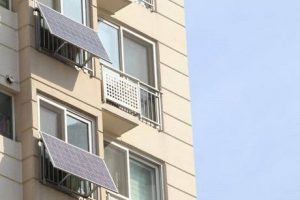 In order to make this system work for the owner of an apartment, you simply need to buy a special solar panel and connect it to the power grid. In the conversion of housing, there is no need. The solar battery created for installation on the balcony is equipped with a micro-inverter attached to the back of the device.
In order to make this system work for the owner of an apartment, you simply need to buy a special solar panel and connect it to the power grid. In the conversion of housing, there is no need. The solar battery created for installation on the balcony is equipped with a micro-inverter attached to the back of the device.
Solar panels of this type are not included in the field of regulation by European legislation regarding renewable energy sources. If the owner of the apartment acquires such a device, then the “green” tariff for it will not apply, since the equipment of this area with solar panels in the laws is not indicate.
For a long time the balcony panels remained in the so-called “gray zone”. From the point of view of jurisprudence, there were no prohibitions for their installation. The same was true of technical regulation – at some points the panels were simply not notice. At the same time, Germany, in contrast to other countries, drew attention and the regulatory requirements of the Union of Electrical Devices forbade the connection of panels to the network of the house, since this could lead to the emergence of excessive load.
This prohibition was interpret in different ways, therefore, some authoritative institutions allowed the installation of balcony panels, the power of which does not exceed 600 watts. This duality entailed a massive installation of solar modules on the balconies of multi-storey buildings. Organizations that dealt with the sale of electricity occasionally clashed with ordinary citizens, and representatives of the legal sector did not see in this moment the risk to consumers.
The end of 2017 was mark by the development of a new technical standard, called DIN VDE 0100-551-1. This project concerns low-voltage equipment for generating electricity and connecting devices for generating electricity and working together with other energy sources. This standard will greatly simplify the use of balcony solar modules in terms of legislation. It is plan that the project will be implement next year. It should be note that Austria, Portugal and Switzerland have already legalized the installation of balcony solar stations.
The essence of the work of an apartment solar station is that it adds electricity to the network of a separate apartment, thereby reducing power consumption from the common network.
It is worth paying attention to the fact that any installation that produces electricity cannot be safely connect to a power outlet. There are certain requirements that the generating devices must meet. Switzerland has a number of requirements for balcony panels:
– maximum current intensity – 2,6 A;
– MAX voltage – 230 V;
– The power plant should not exceed 600 watts.
In addition, the balcony panels must be equipped with a protective shutdown system.
Among the prohibitions, the counter is also rotate in the other direction. Such a case can occur when photovoltaic electricity generates more electricity than a separate apartment requires. This problem is simply solve – just set the reverse rotation limiter.
 The price of solar modules for balconies in European markets ranges from 1.2 to 1.5 euros per 1W. By simple deductions, it can be determined that a panel that has a power of three hundred watts will cost about 400 euros.
The price of solar modules for balconies in European markets ranges from 1.2 to 1.5 euros per 1W. By simple deductions, it can be determined that a panel that has a power of three hundred watts will cost about 400 euros.
In southern Germany, the balcony station, whose panels are located on the facade of the building, is capable of generating approximately 330 kWh during the year. This amount is about 10 percent of the energy consumption of a small household throughout the year. If the energy needs of the apartment will allow consuming all the generated electricity, and the tariff of the common network will be 29 eurocents per kilowatt-hour, the balcony installation will have a rather short payback period.
The solar station can also be equipped with power storage. Now, this is practical not done, since it requires more financial investments, forces and places in the apartment.
Photovoltaic is a rather unpleasant moment for the energy market. It significantly reduces energy consumption and profit in the system of “energy production-network-realization”.
Balcony solar stations are becoming an increasingly powerful competitor for traditional energy, and right now, it is worth revising the foundations for comfortable coexistence. In the near future, the price of new technologies will decrease and its popularity will grow significantly.











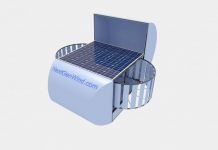
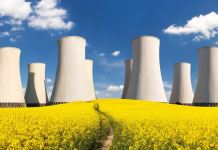


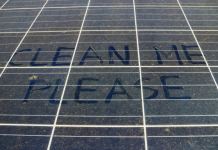

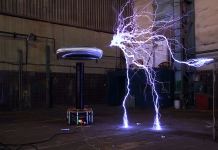

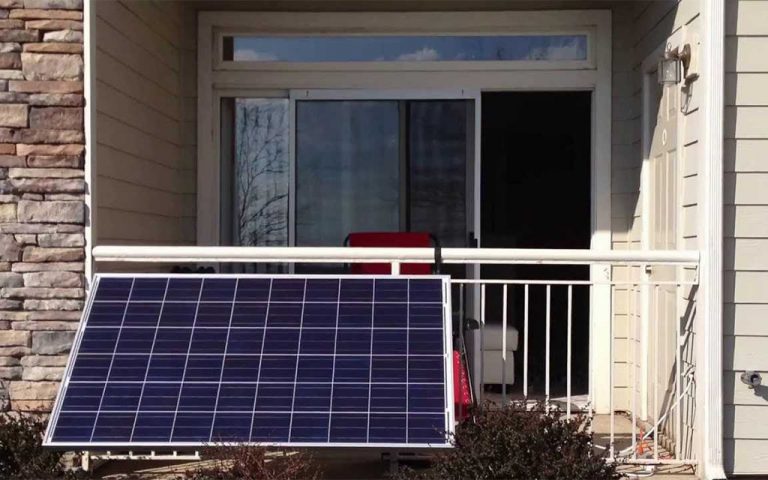
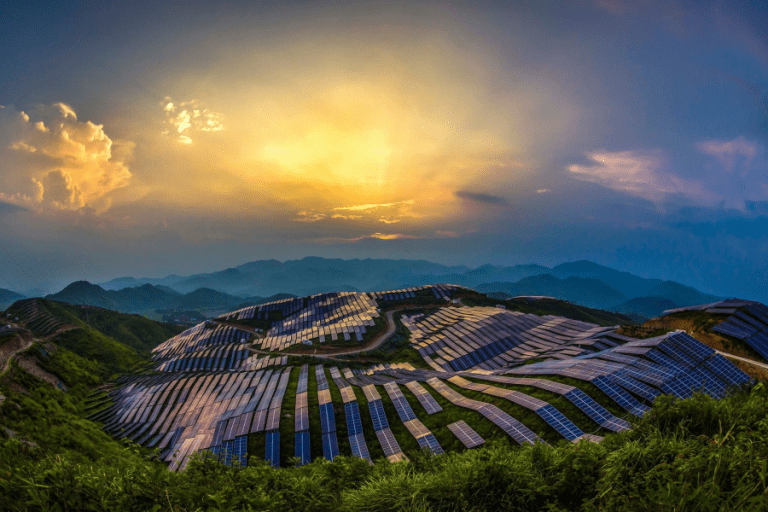
 It should be noted that the location of sites is quite unusual – more than 1200 m above sea level. Tracking system was created in such a way that it seemed possible to install it in places where negative temperatures prevail, and there is an impressive amount of precipitation in the form of snow. The model of the tracker was designed taking into account that it should last as long as possible under these extreme operating conditions.
It should be noted that the location of sites is quite unusual – more than 1200 m above sea level. Tracking system was created in such a way that it seemed possible to install it in places where negative temperatures prevail, and there is an impressive amount of precipitation in the form of snow. The model of the tracker was designed taking into account that it should last as long as possible under these extreme operating conditions. Produces solar trackers S250 is Company “Solar Stalkonstruktsiya.” The partner of the company in the field of development is Mechatron. Trackers comply with all EU norms and are specially adapted to the conditions of use in our country and in Eastern Europe.
Produces solar trackers S250 is Company “Solar Stalkonstruktsiya.” The partner of the company in the field of development is Mechatron. Trackers comply with all EU norms and are specially adapted to the conditions of use in our country and in Eastern Europe.
 Turbine Waterlily begins to generate energy in the water environment, when the flow has a speed of one kilometer per hour. The maximum permissible flow rate is 11 km / h. The manufacturer states that the largest power the turbine can produce is 25 watts. The device is capable of achieving this value at a water flow rate of about 7 km / h.
Turbine Waterlily begins to generate energy in the water environment, when the flow has a speed of one kilometer per hour. The maximum permissible flow rate is 11 km / h. The manufacturer states that the largest power the turbine can produce is 25 watts. The device is capable of achieving this value at a water flow rate of about 7 km / h.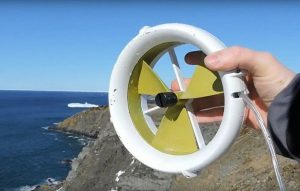 Representatives of the company report that the testing of the turbine was carry out using a bicycle and a towrope. Consequently, it is possible to use a microturbine by attaching it to a bike or boat.
Representatives of the company report that the testing of the turbine was carry out using a bicycle and a towrope. Consequently, it is possible to use a microturbine by attaching it to a bike or boat.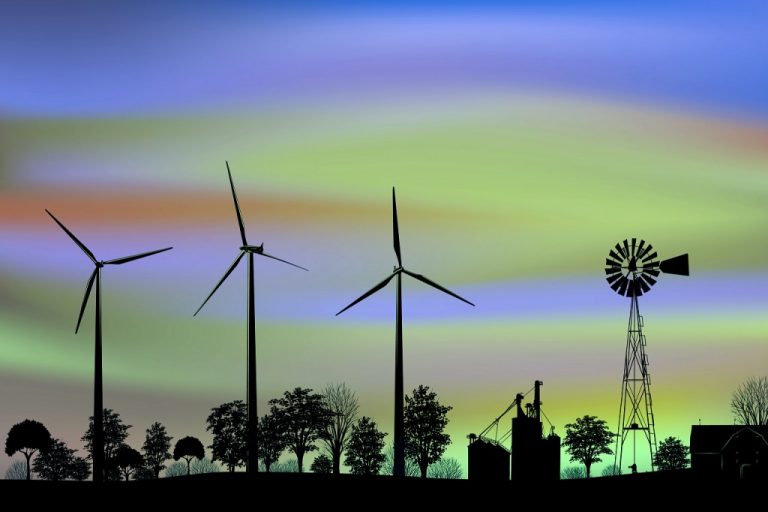
 The high self-consciousness of the citizens of Germany was found out in the form of creating a number of service cooperatives (credit, construction, communal, etc.), which enable citizens to solve all new problems of an economic nature when private enterprises or individual organizations are unable to provide them with proper services at an affordable price.
The high self-consciousness of the citizens of Germany was found out in the form of creating a number of service cooperatives (credit, construction, communal, etc.), which enable citizens to solve all new problems of an economic nature when private enterprises or individual organizations are unable to provide them with proper services at an affordable price. Ukraine, whose territory is suitable for the installation of various types of alternative power generation plants, can take advantage of Germany’s experience and solve many economic problems in this way. Among them are the energy supply of settlements and small cities, which will be able to purchase electricity at cost.
Ukraine, whose territory is suitable for the installation of various types of alternative power generation plants, can take advantage of Germany’s experience and solve many economic problems in this way. Among them are the energy supply of settlements and small cities, which will be able to purchase electricity at cost.
 In the scientific world, this process was call singlet fission. Scientists say that due to the reproduction of this process by artificial means, it is possible to achieve a noticeable increase in the productivity of organic elements and thereby radically change the state of affairs in the solar energy market.
In the scientific world, this process was call singlet fission. Scientists say that due to the reproduction of this process by artificial means, it is possible to achieve a noticeable increase in the productivity of organic elements and thereby radically change the state of affairs in the solar energy market. The number of molecules and a certain type of symmetry plays an important role in the effectiveness of this process in the arrangement of atoms. As an example, scientists are a molecule of pentacene, which forms an organic crystal in the composition of photoelectric cells. The molecule consists of carbon compounds and hydrogen, and has a pronounced symmetry, due to which it can be say about its high efficiency.
The number of molecules and a certain type of symmetry plays an important role in the effectiveness of this process in the arrangement of atoms. As an example, scientists are a molecule of pentacene, which forms an organic crystal in the composition of photoelectric cells. The molecule consists of carbon compounds and hydrogen, and has a pronounced symmetry, due to which it can be say about its high efficiency.
 Scientists have conducted a number of studies and concluded that transparent solar panels, collecting only invisible light, can provide a powerful energy potential for generating electricity. In addition, the engineers made an analogy between the productivity of the solar roof and the solar panels on a transparent basis. This technology can significantly improve the efficiency of generating capacities of buildings, small electronics (including mobile devices), and vehicles.
Scientists have conducted a number of studies and concluded that transparent solar panels, collecting only invisible light, can provide a powerful energy potential for generating electricity. In addition, the engineers made an analogy between the productivity of the solar roof and the solar panels on a transparent basis. This technology can significantly improve the efficiency of generating capacities of buildings, small electronics (including mobile devices), and vehicles. According to Professor Lunt, the panels on a transparent basis open many opportunities for the deployment of solar energy in a non-intrusive way. They can be used on tall buildings with a large number of windows or to power any mobile device (phone or electronic book), which requires the miniaturization and functionality of the energy carrier.
According to Professor Lunt, the panels on a transparent basis open many opportunities for the deployment of solar energy in a non-intrusive way. They can be used on tall buildings with a large number of windows or to power any mobile device (phone or electronic book), which requires the miniaturization and functionality of the energy carrier.
 Earlier it became known about the development of engineers from Great Britain, called Gravitricity. In the center of this project is the use of heavy cargo in the conditions of an abandoned mine line, more precisely in the trunk of this structure.
Earlier it became known about the development of engineers from Great Britain, called Gravitricity. In the center of this project is the use of heavy cargo in the conditions of an abandoned mine line, more precisely in the trunk of this structure. To date, it has become known about the use of such a principle by Gravity Energy AG from Germany. The management of the company said that in the near future plans to build a large-scale energy storage facility, the total capacity of which will be one megawatt. The energy facility is located near Weilheim-in-Oberbayern. In order to accumulate electrical energy, the mine will be used, the depth of which is about 100 meters. The principle of the technology is that under the influence of water, the piston will rise, weighing about 6,000 tons.
To date, it has become known about the use of such a principle by Gravity Energy AG from Germany. The management of the company said that in the near future plans to build a large-scale energy storage facility, the total capacity of which will be one megawatt. The energy facility is located near Weilheim-in-Oberbayern. In order to accumulate electrical energy, the mine will be used, the depth of which is about 100 meters. The principle of the technology is that under the influence of water, the piston will rise, weighing about 6,000 tons.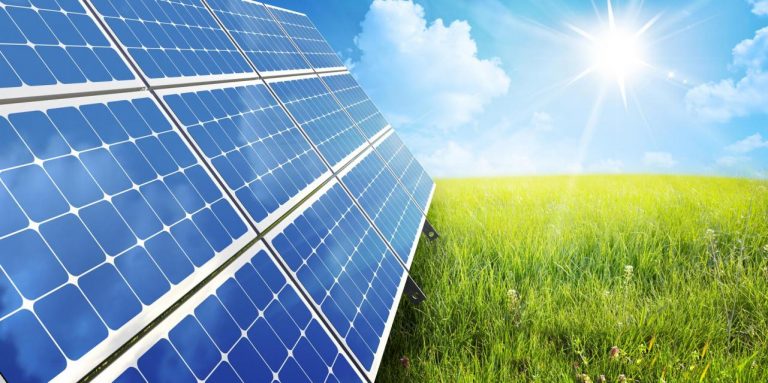
 According to Thorsten Merkel, Head of Altostra, the Irish are very interested in co-operating with Ukraine. “We are starting cooperation with the Dnipropetrovsk region,” Merkel concluded.
According to Thorsten Merkel, Head of Altostra, the Irish are very interested in co-operating with Ukraine. “We are starting cooperation with the Dnipropetrovsk region,” Merkel concluded.

 Each house is unique, it is located in a certain area and this should be take into account when installing solar panels. For example, with a dark color of the roof of the house you need to use a light coating. A good option will be a light-colored hydrobaryar, as it will protect the roof from moisture and prevent overheating of the photocell. The angle of installation of the panels should be 30 degrees.
Each house is unique, it is located in a certain area and this should be take into account when installing solar panels. For example, with a dark color of the roof of the house you need to use a light coating. A good option will be a light-colored hydrobaryar, as it will protect the roof from moisture and prevent overheating of the photocell. The angle of installation of the panels should be 30 degrees.
 The rack is attach to the bracket. It is better to use a zinc profile of hot galvanizing with a coating thickness of 70-150 μm. This approach prevents corrosion and guarantees a service life of about 25 years. In order to avoid corrosion of fasteners, it is better to choose aluminum.
The rack is attach to the bracket. It is better to use a zinc profile of hot galvanizing with a coating thickness of 70-150 μm. This approach prevents corrosion and guarantees a service life of about 25 years. In order to avoid corrosion of fasteners, it is better to choose aluminum. Then clamps used to hold the panel itself. The clamp is mount on the profile with RAL8017 4.8X35 roofing screws – they guarantee reliable connection with simple installation. Mount it on two self-tapping screws, 20 mm apart.
Then clamps used to hold the panel itself. The clamp is mount on the profile with RAL8017 4.8X35 roofing screws – they guarantee reliable connection with simple installation. Mount it on two self-tapping screws, 20 mm apart. According to this project, DC cables go to the transformer substation. Installation of the transformer substation is carry out in the following way: the substation is fix to the wall of the house with a dowel of at least 100 mm and a diameter of at least 10 mm for reliable coupling. For this purpose, a perforator with a power of at least 1200 watts is required. To connect to a common power grid, an electric cable of 10 kW is use, which is immediately supply to the city power line.
According to this project, DC cables go to the transformer substation. Installation of the transformer substation is carry out in the following way: the substation is fix to the wall of the house with a dowel of at least 100 mm and a diameter of at least 10 mm for reliable coupling. For this purpose, a perforator with a power of at least 1200 watts is required. To connect to a common power grid, an electric cable of 10 kW is use, which is immediately supply to the city power line.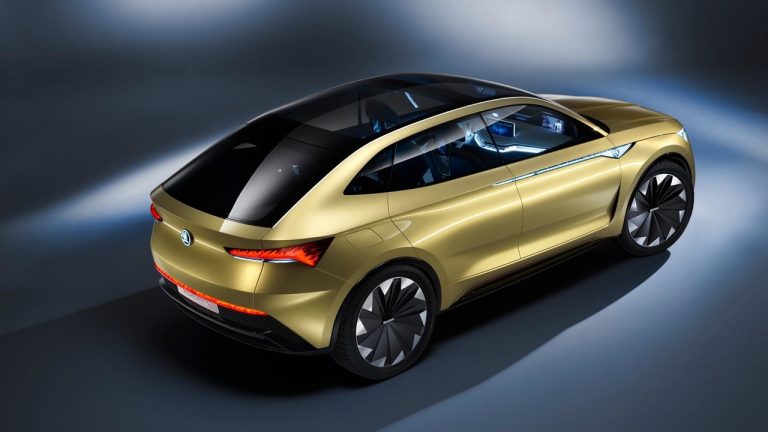
 In addition, Oleg Boyarin said that now no specific decisions on the issue of electric cars have been take. The possibility of this kind of production is now at the stage of study, so we can speak only in the end.
In addition, Oleg Boyarin said that now no specific decisions on the issue of electric cars have been take. The possibility of this kind of production is now at the stage of study, so we can speak only in the end. The Ukrainian automobile construction company is currently ready to start importing electric cars to our state, but this process will become fully possible after the preparation of the appropriate infrastructure. The company’s shareholder is betting on new electric vehicles, because the imported electric cars in our country are not legal business.
The Ukrainian automobile construction company is currently ready to start importing electric cars to our state, but this process will become fully possible after the preparation of the appropriate infrastructure. The company’s shareholder is betting on new electric vehicles, because the imported electric cars in our country are not legal business.


